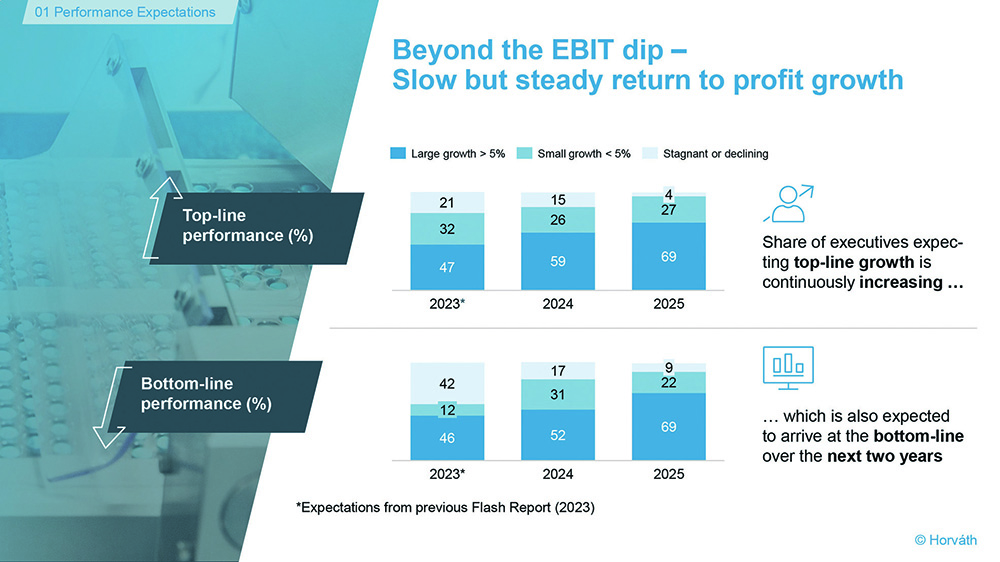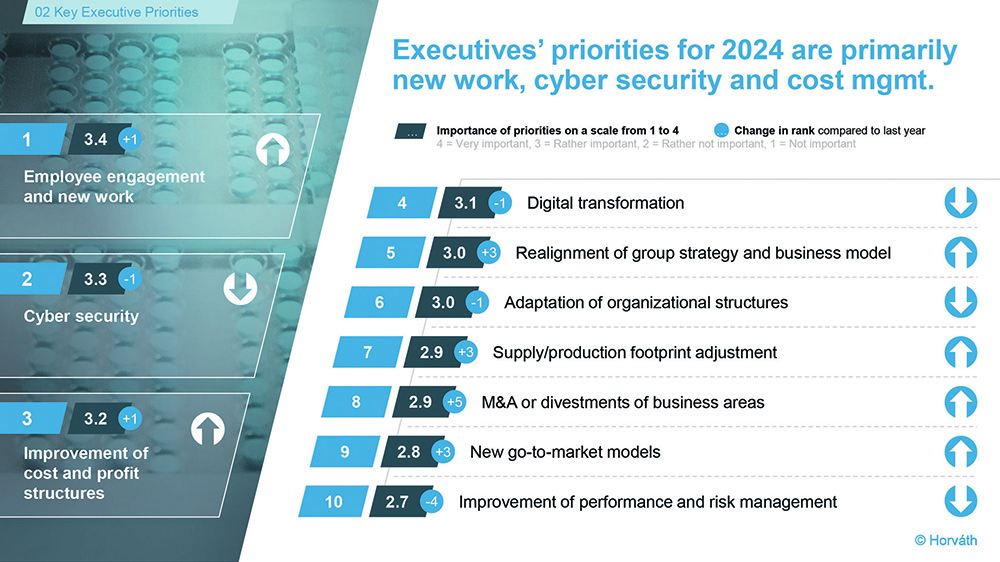Productivity in Biopharma Research Picks Up
Latest Trends in Pharma R&D – Optimism Is Returning
Artificial intelligence (AI) is not only penetrating our daily lives more and more, but is also increasingly changing the research and development of new active ingredients in the pharmaceutical industry. Scientists at the University of California (UC) San Diego have recently developed a machine learning algorithm that simulates the time-consuming chemistry involved in the initial stages of drug discovery. This could significantly streamline the process and open doors for never-before-seen treatments. While identifying drug candidates typically requires thousands of individual experiments, the new AI platform called Polygon could potentially deliver the same results in a fraction of the time, according to a report in “Nature Communications“. The researchers used the new tool to synthesize 32 new drug candidates for cancer.
“A few years ago, AI was a dirty word in the pharmaceutical industry, but now the trend is definitely the opposite, with biotech start-ups finding it difficult to raise funds without addressing AI in their business plan,” said senior author Trey Ideker, professor in the Department of Medicine at UC San Diego School of Medicine and adjunct professor of bioengineering and computer science at the UC San Diego Jacobs School of Engineering.
IQVIA: Global Biopharma R&D Productivity Rebounded
Technological developments in the pharmaceutical and biotech industry are also reflected in increasing R&D productivity. As the IQVIA Institute for Human Data Science reports, global biopharma R&D productivity rebounded in 2023 with higher composite success rates enabled by industry-wide and regulator adoption of data and technology driven innovation. This included novel trial design, optimized biomarker use, and digital and decentralized trial methodologies. This rebound occurred while clinical trial starts and funding returned to pre-pandemic levels, according to the IQVIA report “Global Trends in R&D 2024: Activity, Productivity, and Enablers.”
“The improvement in clinical productivity and composite success was notable across all therapy areas, particularly in Phases I and III and in regulatory review,” said Murray Aitken, executive director of the IQVIA Institute for Human Data Science. “This reflects industrywide ingenuity and regulatory acceptance of innovative data and technology-driven enablers in trial design and digital trial execution. Clinical trial starts have returned to prepandemic levels, signaling a recognizable shift in pipelines and clinical development programs to a focus on innovative modalities in oncology, immunology, neurology and metabolic diseases.”
It is noteworthy in this context that the regulatory authorities also contribute to the higher output of biopharma. IQVIA points out, that regulatory agencies are generally attempting to make changes which the industry finds positive, including greater simplification, transparency and speed. However, the company notes that the pace of change differs across geographies.
In total, 69 novel active substances (NASs) were launched globally in 2023 — six more than the prior year — and representing a return to pre-Covid-19 levels. Also global funding of biopharmaceutical research and development increased to $72 billion, up from $61 billion in 2022. In the same period, M&A activity jumped to $140 billion from $78 billion in 2022, while the median deal value fell for the second year in a row, according to the report.
In contrast, the number of clinical test series starts declined 15% in 2023 from 2022, a third of which was driven by a reduction in Covid-19 trials. On the other hand, this decline also reflected a shift in clinical development programs among large biopharma companies away from immunooncology to a focus on hot spots, including cell and gene therapies, antibody-drug conjugates (ADCs), multi-specific antibodies and obesity treatments.

PwC: Risk from Geopolitical Tension
The consultancy firm PwC describes the situation for the biopharmaceutical industry also positive in many respects, although not always sunny: „A healthy pharma sector produces positive outcomes for both patients and investors. Over the last year, we’ve seen breakthroughs in vaccine development, cancer treatments, GLP-1 drugs that are revolutionizing obesity management, gene therapy and gene editing technology for rare diseases and new treatments for complex diseases like Alzheimer’s,“ says PwC.
The challenge: Every cost on the P&L is going up due to inflation, interest rates, new tax regimes and an increasing threat environment, argues the firm. As the cost of doing business rises, prices for some of the most widely used drugs will be coming down with the implementation of the US Inflation Reduction Act which, for the first time, will allow the federal health insurance program Medicare to negotiate drug prices. Furthermore, the 2024 operating environment also faces continued risk from geopolitical tension, domestic political uncertainty and heated campaign rhetoric.
“Seeing how this concept plays out over the next decade, both in academia and in the private sector, is going to be very exciting … The possibilities are virtually endless.”
Trey Ideker, professor in the Department of Medicine at UC San Diego School of Medicine and adjunct professor of bioengineering and computer science at the UC San Diego Jacobs School of Engineering
AI Training with More than One Million Molecules
Such adversities need not concern the scientists at UC San Diego. They can concentrate solely on the AI technology. Lead author Ideker points out that the few drugs with multiple points of action in the past were largely discovered by chance. Moreover, their development takes many years and costs millions of dollars. The new Polygon technology platform could help remove chance from the equation and launch a new generation of precision medicine. The researchers trained Polygon with a database of over a million known bioactive molecules, containing detailed information about their chemical properties and known interactions with protein targets.

“This reflects industrywide ingenuity and regulatory acceptance of innovative data and technology-driven enablers in trial design and digital trial execution.”
Murray Aitken, executive director of the IQVIA Institute for Human Data Science
Biopharma Managers Optimistic about the Future
In view of such technological developments, biopharma managers seem to be mostly optimistic about the future. According to a recent survey by management consultants Horváth Life Sciences, top management of life sciences companies is very confident about 2024 and 2025. Over 80% of pharmaceutical, medical technology and biotechnology executives expect profit growth for the current year and over 90% for the coming year. Around one in two companies expects profits to rise by more than 5% this year and 70% next year. Major reasons for the more optimistic picture are the expected effects from cost efficiency measures targeting mainly G&A and direct procurement, explains Horváth in its “Life Sciences Executives Flash Report”.
PwC points out that leading companies can seize this moment to “reinvent for returns” in order to outperform in this environment. Companies with foresight will see 2024 as the year of delivering impressive results for both patients and investors. They will set their transformation agenda accordingly, which means rethinking the balance of R&D investments to increase focus on “white space,” accelerating products through the value chain with transformative investments in AI, lowering operational costs across the enterprise and using deals as a key enabler of strategy.
This is precisely the approach that the scientists from San Diego are pursuing with their new AI platform. Ideker: “Seeing how this concept plays out over the next decade, both in academia and in the private sector, is going to be very exciting … The possibilities are virtually endless.”
Author: Thorsten Schüller, CHEManager





